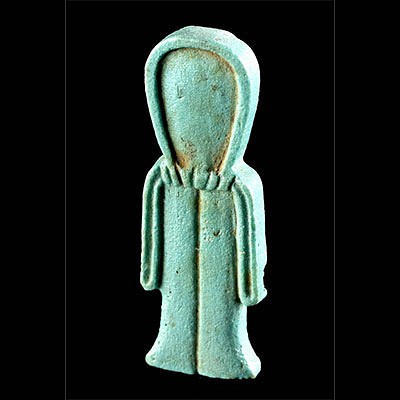19th C. USA Tiger Maple Long Barrel Percussion Rifle
Lot 108d
About Seller
Artemis Gallery
686 S Taylor Ave, Ste 106
Louisville, CO 80027
United States
Selling antiquities, ancient and ethnographic art online since 1993, Artemis Gallery specializes in Classical Antiquities (Egyptian, Greek, Roman, Near Eastern), Asian, Pre-Columbian, African / Tribal / Oceanographic art. Our extensive inventory includes pottery, stone, metal, wood, glass and textil...Read more
Categories
Estimate:
$2,200 - $3,300
Absentee vs Live bid
Two ways to bid:
- Leave a max absentee bid and the platform will bid on your behalf up to your maximum bid during the live auction.
- Bid live during the auction and your bids will be submitted real-time to the auctioneer.
Bid Increments
| Price | Bid Increment |
|---|---|
| $0 | $25 |
| $300 | $50 |
| $1,000 | $100 |
| $2,000 | $250 |
| $5,000 | $500 |
| $10,000 | $1,000 |
| $20,000 | $2,500 |
| $50,000 | $5,000 |
| $100,000 | $10,000 |
| $200,000 | $20,000 |
About Auction
By Artemis Gallery
Nov 4, 2021
Set Reminder
2021-11-04 10:00:00
2021-11-04 10:00:00
America/New_York
Bidsquare
Bidsquare : Ancient & Ethnographic Art Through The Ages
https://www.bidsquare.com/auctions/artemis-gallery/ancient-ethnographic-art-through-the-ages-7799
Ancient art from Egypt, Greece, Italy and the Near East, as well as Asian, Fossils, Pre-Columbian, Native American, African / Tribal / Oceanic, Fine art, and much more! All categories, all price ranges... all legally acquired and guaranteed to be as described or your money back. Artemis Gallery info@artemisgallery.com
Ancient art from Egypt, Greece, Italy and the Near East, as well as Asian, Fossils, Pre-Columbian, Native American, African / Tribal / Oceanic, Fine art, and much more! All categories, all price ranges... all legally acquired and guaranteed to be as described or your money back. Artemis Gallery info@artemisgallery.com
- Lot Description
North America, United States, ca. 19th century CE. A handsome percussion rifle with a lengthy iron barrel, wood stock, and brass fittings and inlays. The rifle has an octagonal steel barrel with a notched sight and a ramrod groove and brass ramrod guides on the underside. On the top of the barrel, near forestock, is a faint engraved name in script, likely the owner, and the iron lockplate is etched with etched linear motifs. The trigger is enclosed in a brass guard and along the forestock and backstock are brass ornaments in diamond and heart shapes. A rectangular brass patch box and a scrolling panel is set into the backstock for holding extra patches and a brass butt cap is riveted flush against the stock, completing this gun. The wood is tiger maple and has developed a wonderful warm red patina with honey-colored striations. This rifle would be a beautiful display piece! Size: 50.25" L x 4.5" W (127.6 cm x 11.4 cm); bore: 0.4" W (1 cm)
Provenance: private J. P. collection, Rye, Colorado, USA; ex-Bill Buffinger collection, Hollywood, California, USA, before 2000
All items legal to buy/sell under U.S. Statute covering cultural patrimony Code 2600, CHAPTER 14, and are guaranteed to be as described or your money back.
A Certificate of Authenticity will accompany all winning bids.
PLEASE NOTE: Due to recent increases of shipments being seized by Australian & German customs (even for items with pre-UNESCO provenance), we will no longer ship most antiquities and ancient Chinese art to Australia & Germany. For categories of items that are acceptable to ship to Australia or Germany, please contact us directly or work with your local customs brokerage firm.
Display stands not described as included/custom in the item description are for photography purposes only and will not be included with the item upon shipping.
#166204Hammer and trigger articulate but the hammer does not lock when cocking. Losses to wood and latch inside of patch box, patch box lid cannot stay securely closed. Brass around patch box is not flush with stock. Losses to wood along lock plate and hammer. Surface pitting to iron lock plate and barrel. Gun has not been tested for firing functionality. Ramrod is likely not original. Faint engraving on barrel, which is not legible, and no maker marks on the lock plate. Beautiful graining on the stock.Condition
- Shipping Info
-
All shipping is handled in-house for your convenience. Your invoice from Artemis Gallery will include shipping calculation instructions. If in doubt, please inquire BEFORE bidding for estimated shipping costs for individual items.
-
- Buyer's Premium



 EUR
EUR CAD
CAD AUD
AUD GBP
GBP MXN
MXN HKD
HKD CNY
CNY MYR
MYR SEK
SEK SGD
SGD CHF
CHF THB
THB














